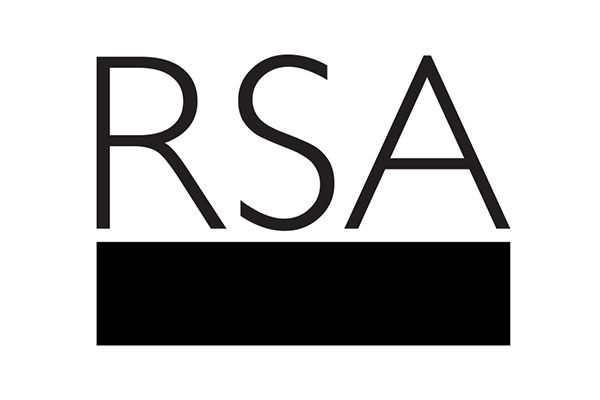Although I took time out to watch the boats, I am spending much of the Jubilee weekend continuing to think about my forthcoming RSA annual lecture, which aims to add depth to the 21st century enlightenment thesis. If you have a spare ten minutes I would be ever so grateful for views….
In a recent post I offered a rationale for examining social problems first as ‘power to’ problems (broadly assuming policy makers and public want the same outcome) while recognising this approach might disclose ‘power over’ issues (in which one set of interests are in conflict with another).
There is an important consequence of seeing problems as ‘power to’ not ‘power over’. In the latter case the amount of power in society is, broadly speaking, assumed to be fixed. The main questions are who holds that power and to what purposes they put it. But in the former case the power available to address a desired change is a function not primarily of the distribution of a fixed quantum of power, but more of the degree to which factors such as insight, co-ordination, mobilisation and leadership are applied to the problem.
One way of thinking about difficult and complex (‘wicked’) problems – like how affordably to provide care and dignity to older people, to provide children with equal life chances in a liberal market economy, to foster a culture of learning and enterprise among employers and employees, to increase economic prosperity while living within environmental constraints – is through the prism of cultural theory (more descriptively called the theory of plural rationality).
I have written extensively about these ideas before. The framework began with the anthropological findings of Mary Douglas and the development of grid-group theory. Douglas proposed that the characteristics of societies, and groups in societies, could be plotted against a group axis based on the strengths of membership ties and shared values, and a grid axis based on the level and fixedness of social hierarchy. This led to the development of a two by two matrix of low group, low grid (e.g. a trading floor), low group, high grid (e.g. prison), high group, low grid (e.g. a commune) and high group, high grid (e.g. an organised religion). Each type emerged from and reinforced culture and habits thus creating a powerful perspective on social reality.
As a typology this offered an interesting way of thinking about groups and institutions and for understanding why different worldviews can be difficult to reconcile. But the idea became much more powerful when a number of thinkers started to explore how positions in the matrix were reflected in predispositions towards action. As grid group theory became cultural theory, four ways of thinking about change were mapped on to the matrix; the individualistic (low grid, low group), the fatalistic (high grid, high group), the egalitarian (low grid, high group) and the hierarchical (high grid, high group).
To make this more concrete we can describe how these perspectives translate into different views on a challenge, say, climate change: The individualistic perspective is optimistic about the adaptability of humans and nature and expects, given free reign and the right incentives, ingenuity, markets and technology to solve the problem. The fatalistic perspective may be inclined to scepticism about the whole issue but assumes that even if climate change if real and man-made nothing will be done about it until it is too late, or if anything is done it will have other adverse consequences. The egalitarian perspective argues that climate change can only be addressed through a fundamental change involving all citizens committing to more socially responsible and sustainable ways of living. The hierarchical perspective emphasises the need for leadership, an alliance of scientists, policy experts and political leaders committing to a rational global framework to reduce and allocate emissions.
As Michael Thompson has argued, these perspectives apply not only to the response to climate change but also reflect different views of nature itself; individualists tend to see nature as resilient, egalitarians see it is as fragile, the hierarchical views sees it as needing careful risk management while fatalists view nature as inherently unreliable and unpredictable.
Whilst typologies imply fixed and stable states, recent cultural theory has added an insight that introduces change and offers a perspective on complexity. Thompson and others argue that the perspectives gain much of their energy from their opposition to each other. For example, hierarchists are united and inspired by their resistance to the irresponsibility of individualists, the unrealism of egalitarians and the apathy of fatalists.
As Mary Douglas herself put it, praising how cultural theorists had built on her initial observations:
The brilliant stroke was to introduce the idea of competition between cultures. They compete for members, compete for prestige, compete for resources. What had started as a static mapping of cultures upon organisations was thereby transformed into a dynamic theoretical system. It made a double attack on methodological individualism and on philosophical relativism. It put cultural theory into the heart of policy analysis and ethical theory.
It is important to appreciate that the four perspectives are not consistent within individuals. Not only might I be hierarchically minded at work, egalitarian in my politics, individualistic in my personal life and fatalistic when watching West Brom, but when entering a new situation which calls forward a view of power and change my response will be conditioned by the interplay of my personality, current predisposition and the existing configuration of perspectives in that situation.
Here, largely intuitively, I add my own suggestion. The four categories of cultural theory can be seen to have a fractal quality.
Remembering that grid group theory arose from the rich empirical base of multiple observations of a range of 'primitive' tribes, it could be suggested that at the base of many behavioural dilemmas lie four possible human responses; do what I am told (hierarchy), do what the group does/is right for the group (egalitarian), do what I want (individualistic), and it doesn’t matter what I do (fatalistic).
Imagine a child’s birthday party: some children will obediently follow the advice of adults and the rules of games, others will pay particular attention to ensuring that everyone is joining in, while some children will compete fiercely to win games even if this involves a little cheating. A final group seems only to be going through the motions, slightly in a world of their own. The adults observing these behaviours might want to reflect on the ways their messages to the children reinforce these behavioural responses, sometimes emphasising obedience to the rules of the party and the games, other times encouraging ‘fairness’ and calling on the children to attend to the needs to their friends while occasionally – particularly on behalf of their own child – geeing them up to win the games and applauding them when they do. Indeed, one research study (can’t lay my hands on the reference right now) has found the four cultural theory responses to be observable in primary school classrooms.
The degree to which these modes are ingrained or learned could be tested by a combination of social psychological experiments and the use of brains scans to see whether it is possible to identify distinct neurological processes aligning with the different responses.
If this basic structure of options holds true it would need some evolutionary explanation: why have these four responses evolved? An hypothesis can be sketched. As a species that has culture, meaning and the ability to make its own decisions, we need hierarchy for order and social organisation, but were we to be uncritical of hierarchy we would be vulnerable to being destroyed by the folly and self-interest of leaders and their Gods. Similarly, while we need bonds of reciprocity and solidarity to function in groups, over weaning egalitarianism would lead to social stasis through resistance to change whether generated internally and through contact with out groups. Individualism is necessary for survival and the competition which drives performance and innovation, but were we only to listen to the voice saying ‘do what you want’ there soon really would be no such thing as society. Finally, fatalism is necessary for us to cope with being the only species carrying the terrible awareness of our own individual mortality, but were humans to have been in thrall to fatalism then our species would surely have long since given up the ghost.
As evolved instincts, this four-mode cognitive switching mechanism is then embedded in cultural and institutional form at every level where different modes of response to change are available, from a household argument to global policy-making.
Given that these categories of response are inherent in human cognition and are culturally ubiquitous, and given that they are bound in a continual process of competition, in which the success of one by empowering the others gives rise to its own overthrow, then strategies which rely on human behaviour for their success need to take account of all four responses. This is why cultural theorists advocate what they call 'clumsy solutions' – strategies that take into account each response and seek to turn these into aspects of the strategy rather than for the alternative (if they are excluded) of them emerging as sources of failure/forms of resistance.
Which brings us back to ‘power to’ or the lack of it. Remember that cultural theory has three active modes (hierarchical, egalitarian, individualistic) but also – crucially - one passive mode (fatalism). Clumsy solutions seek to draw on the respective power in each mode (its insights, methods and tools) and to combine them to solve or at least mitigate a problem.
But what if the problematic of developing such solutions lies not only in the need for clumsiness (as against the flawed neatness of solutions which exclude one or more modes), but also in the internal strength of each mode? If we want to construct an arch of clumsy solutions and not fall back on the barren ground of fatalism, we need to do so on three sound pillars of active rationality.
To clarify: not every problem needs a clumsy solution, nor is every situation or institution one that relies equally or substantially on each mode. To refer to today’s news stories; we understand armies in action are overwhelmingly hierarchical, street parties are egalitarian and tennis tournaments are individualistic. The attempts to impose the ‘wrong’ mode in any of these circumstances would be immediately jarring. (Although, remembering the fractal point earlier; within each mode there will be sub-variants of the other modes, for example the bossy guy tending to over-organise the street party or the Private leading a disparaging conversation with his colleagues about the unreasonable leadership by the brigade captain).
But the kinds of problem almost certain to need a clumsy solution are the ‘wicked problems’ with which I began this post. Not only are we finding it difficult to solve these problems but we are losing faith in our ability to do so; in the developed world there has in recent decades been a marked trend toward social pessimism. Could it be that this reflects not just the challenge of developing and negotiating clumsy solutions but also the relative weaknesses/delusions of each mode? The ‘power to’ deficit is not just a problem of combining elements but of the state of those elements themselves.
It is this thesis that will be the subject of subsequent posts. Here are four brief points upon which I hope to elaborate.
1. The argument that hierarchy is in crisis has almost become a cliché, having versions stretching from the legitimation crisis identified by Habermas in the 1970s to the disruptive implications of new technology described by writers like Clay Shirky. Equally, a crisis in egalitarian bonding and solidarity can be linked to changes in the modern world including rising affluence and growing geographical mobility. This may be why the modern condition often feels like a disorienting mixture of individualism and fatalism.
Yet, as cultural theory tells us, these currently dominant modes are subject to their own internal tensions and any society that underplays hierarchy and egalitarianism is lopsided and frail. A fruitful approach to social analysis may therefore be to examine concretely the state of play of each of the active modes at the level of society as a whole. Individualism may be dominant but is it possible that the limited competition from ailing hierarchy and a weak egalitarianism is what has led this impulse to become hubristic, self-defeating and therefore ultimately frail?
2. Moving from analysis to interpretation, cultural theory intriguingly suggests a policy of generous pluralism. In the face of complex issues, at any level from the home to Whitehall, the enlightened individualist (to take one example) understands that workable solutions will benefit the development of a robust egalitarian voice, give fair due to the challenges of hierarchy, whist resisting the temptation merely to disparage the human instinct of fatalism. Imagine the wider benefits of a world where seeking to strengthen the confidence and clarity of an adversary’s case was conventionally seen as good practice.
3. In my 21st century enlightenment lecture I quoted Robert Kegan’s idea of self-authorship as a way of thinking about the kind of consciousness we needed modern citizens to attain. Kegan writes of an ability to “resist our tendencies to make ‘right’ or true’ that which is merely familiar; and ‘wrong’ or ‘false’ that which is only strange”.
Applying cultural theory might this ideal be extended from its obvious meaning as openness to other ways of living and believing to the reflexivity, recognition and respect which comes from appreciating that wherever there are difficult decisions to be made these foundational types of response are latent not only in the situation but in every one of us?.
4. At the heart of the 21st century enlightenment thesis was the suggestion that – in light of modern social challenges and new insight into human behaviour - the time has come to re-examine the core values which triumphed in the original enlightenment; autonomy, universalism and humanism. These values plot broadly on to the active modes of cultural theory; autonomy/individualism, universalism/egalitarianism, humanism/hierarchy (in that humanism is the principle that human beings should collectively order their own affairs to maximise their own interests; i.e. the technocratic doctrine of utilitarianism). In the 2010 lecture I examined how these values have become thinned out and distorted (for example, the decline of the notion of autonomy into mere possessive individualism), and the need to reconceptualise them (for example, seeing universalism not simply as an issue of extending rights but also fostering empathy and solidarity). In so doing I was unknowingly sketching a way to renew the modes of rationality that must combine to create clumsy solutions to wicked problems.
Related articles
-
Imagining a better future through foresight – why the metaphors we use matter
Adanna Shallowe
As we begin to imagine the post-pandemic world, we need to challenge our use of old metaphors to allow for new narratives and better futures to emerge.
-
Polarised: The RSA podcast exploring the politics of division
James Shield
Is it really true that we’ve never been more divided as a society? And if it is, how did it happen and what can be done?
-
How can we give up bad habits for good?
Ian Burbidge
With the post-Christmas resolutions looming, when we try to address the worst of our seasonal over-indulgences, the question remains: how can we give up bad habits for good?




Be the first to write a comment
Comments
Please login to post a comment or reply
Don't have an account? Click here to register.